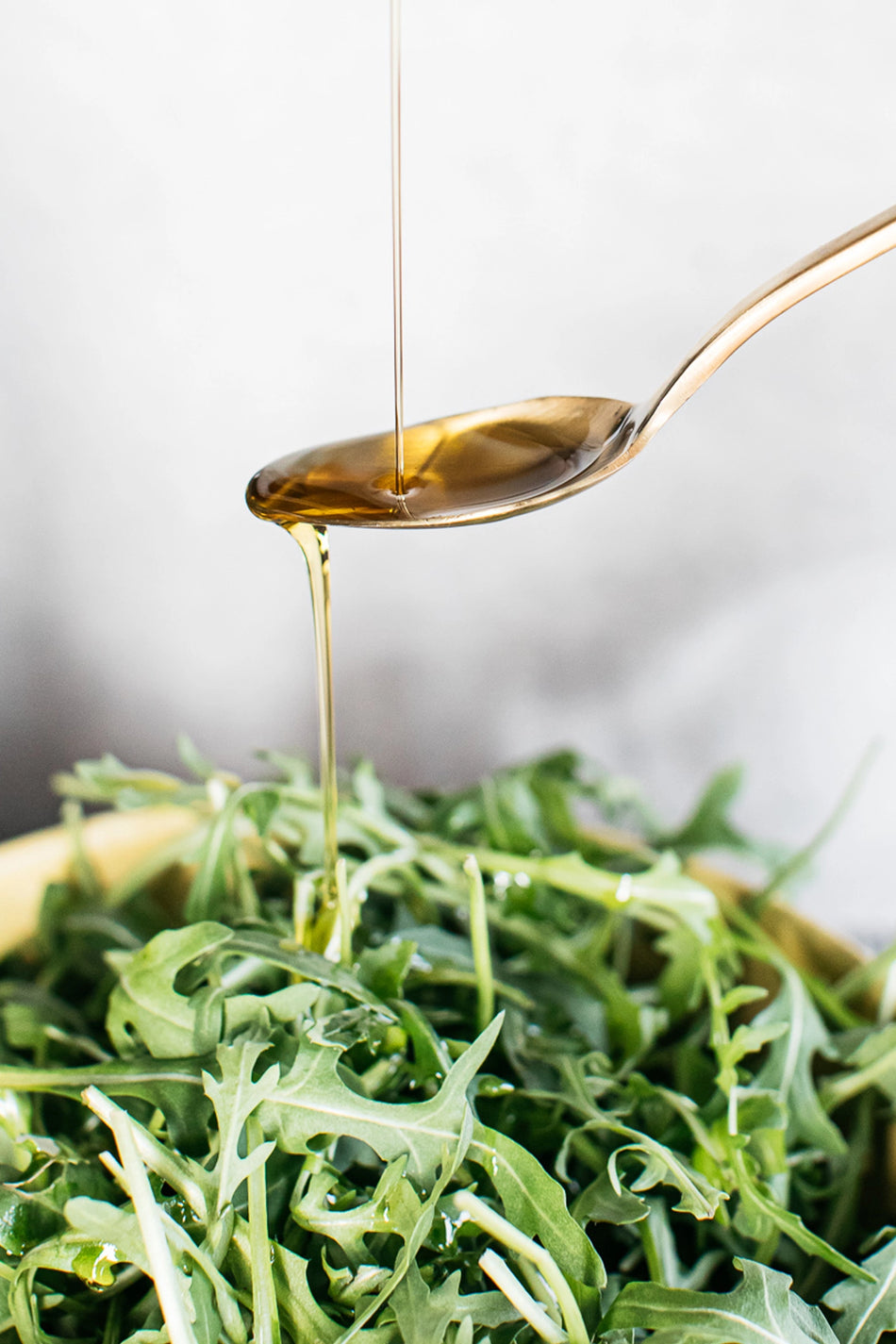The history of fish oil and omega-3
CONTENTS
The phrase ‘superfood’ is often bandied around, but omega-3 fish oil really is super. From our bodies to our brains, taking this essential fatty acid is a great way to supplement your diet and maintain general good health.
Today, omega-3 is rarely out of the headlines which may make it seem like quite a modern invention. But surprisingly fish oil was also incredibly popular in ancient Rome (although the Romans made their version out of rotten fish guts), and we were taking a daily spoonful of oil after the Industrial Revolution too.
So where does fish oil come from? Find out as we chart the fascinating history of the omega-3 fish oil supplement, from prehistoric times right up to the present day.

Omega-3 in the Stone Age
According to Dr Michael Crawford in his 1989 book, The Driving Force: Food, Evolution and The Future, there’s a connection between our new fish-based diet and human evolution. “Without a diet high in DHA from seafood we could not have developed our big brains. We got smart from eating fish and living in water.”
To prove his theory, Dr Crawford carried out extensive studies into the role of omega-3 in the evolution of the human brain. He studied animals and found that dolphins have much bigger brains than zebras (despite similar body sizes), because their diets are rich in omega-3. Just like humans, dolphins are thought to be smart because of the omega-3 fatty acids they eat.
Omega-3 fish oil in Roman times
Next stop on our whistle-stop tour through time is ancient Rome because the practice of extracting a supplement from fish can be traced right back to the 8th century. Garum, more of a fish oil-based sauce, was incredibly popular among all social classes. In fact, take a visit to Pompeii and you’ll see the most widely found relics were garum vessels used to store the stinky liquid.
And it really was stinky. The Romans’ version was made of the rotting intestines of fish mixed with salt and distilled into a vessel. While the best garum fetched extraordinarily high prices, it was made in various grades and used to flavour just about everything, with the poorest members of society using it top their porridge.
The Romans loved their fish oil so much they even exported it to Britain, with garum vessels having been discovered here. First and foremost it was prized for its taste, but garum was also thought to have medicinal properties. It’s believed it was used as an aphrodisiac, laxative and headache cure.
Recently, Spanish food scientists made some Roman garum for themselves with the help of some ancient recipes. They analysed the oil and found it contained extremely high amounts of omega-3 fatty acids, making it the world’s first-known fish oil supplement.
Fish oil during the Industrial Revolution
Known in both the German and Dutch language as “the English Disease”, rickets reached epidemic proportions in Britain during the Industrial Revolution. A condition suffered by babies and children, it led to weakened bones, bowed legs and stunted growth. The cause? A deficiency of vitamin D caused by poor diet and lack of sunshine. The thick industrial smog that covered the inner cities blocked out so much sunlight that some 80 percent of London children were thought to have varying degrees of rickets.
Once it was figured out that vitamin D was to blame, cod liver oil was widely touted as the solution because the liver of the codfish stored vitamin D in such high amounts.
Cod liver oil had been used as a medicine from the early 1800s, but it really took off in 1850 when a Norwegian pharmacist called Peter Möller made an oil that ‘didn’t taste fishy’. In his patented ‘Möller method’, he ground the fish livers with water into a slurry, which was gently simmered until the oil rose to the top where it was skimmed off and purified.
But Möller’s real genius lay in his marketing because he hired an advertising team to launch his product. His ad campaign was a phenomenal success and large numbers of people started to take a spoonful of cod liver oil daily, whether they were at risk of rickets or not. It was the first time the general public were taking a dietary supplement on such an unprecedented scale.
Read more about the differences between cod liver oil and omega-3 fish oil.




The 1920s: the ‘essential’ nature of fatty acids is discovered
While protein and carbohydrate were known to be vital dietary components, by the first decade of the 20th century, fat was not considered to be essential because fatty acids could also be made in the body from carbohydrate.
However, two scientists came up with ground-breaking research that would turn the established view on its head. Husband and wife team George and Mildred Burr discovered that rats who were fed a totally fat-free diet suffered a deficiency disease, which could be reversed by giving the rats linoleic acid, meaning that fatty acids really were essential nutrients.
The Burrs concluded from this that other unsaturated fatty acids such as omega-6 and omega-3 were essential for health too. The discovery of essential fatty acids was paradigm-changing, and it is now considered to be one of the landmark discoveries in nutrition research.
The 1970s: fish body oil is discovered
While the Burrs made great in-roads with their essential fatty acid research of the 1920s, it wasn’t until more than 40 years later the benefits of omega-3 were fully understood.
In the late 1960s, Danish scientists studying the Inuit in Greenland were surprised at how healthy they were, despite a fatty diet of seal meat, fish and whale.
Intrigued by these findings fellow Danes, Dr Dyerberg and Professor Hans Olaf Bang, went out to Greenland and examined the Inuit’s blood lipids to find out why. Dr Dyerberg explains what they found: “Their blood lipid levels were favourable, but not to the extent we could explain why they had nearly one-tenth the incidence of coronary heart disease of Americans and Danes at that time. So we went further into analysing their blood, which took nearly two years.
“We discovered it contained two fatty acids that no-one had paid attention to before. We visited a lipidologist in the US, who told us they were EPA and DHA – two names that are now familiar to many.”
The average intake of EPA and DHA among the Inuit was found to be more than 13g per day, while Americans had below 200mg, and nearly 25% had no intake of omega-3 at all.
In the following years more research came to the same conclusion and today, the European Food Safety Authority (EFSA) still supports the claim that 3,000mg of DHA and EPA per day can maintain both a healthy heart and healthy blood pressure.

Omega-3 today
Omega-3 fish oil remains an incredibly popular supplement, with the global fish oil market expected to grow 13.1% by 2020.
But one thing that has changed since the 1970s is the quality of fish oils now available on the market. Today there is more choice than ever before, with discerning consumers increasingly opting for supplements that are fresh, sustainable and certifiably toxin-free.
Whereas once you could only get fish oil in ethyl ester form (where raw fish oil is treated and concentrated using ethanol), premium brands (such as Bare Biology) use new methods to produce their liquid oils and capsules. Our supplements are in a natural triglyceride form which can be easily absorbed by the body.
Consumers also have a greater choice of the type of fish used for the oil in their supplement, with the best brands favouring wild, small oily fish.
Choosing a high-quality omega-3 fish oil such as Life & Soul Omega 3 fish oil means you’ll have it all. High doses of EPA and DHA from a safe, pure and sustainable source. Try our supplement and you’ll really see the difference. The rest will be history!

